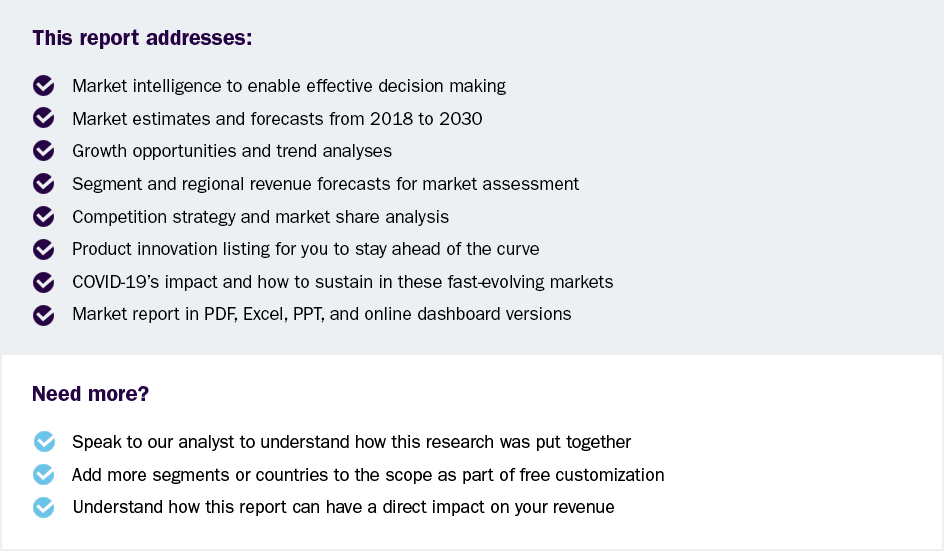Cell Culture Protein Surface Coatings Market Worth $2575.0 Million By 2030
Cell Culture Protein Surface Coatings Market Growth & Trends
The global cell culture protein surface coatings market size is expected to reach USD 2575.0 million by 2030, registering a CAGR of 15.29% from 2023 to 2030, according to a new report by Grand View Research, Inc. Increasing focus on stem cell research and development is the most crucial factor that drives the industry growth. Stem cell therapy is the most promising method to treat severe medical conditions, such as CVDs, brain disease, cell deficiency therapy, and blood disease. Thus, biotechnology companies and research laboratories are adopting innovative protein surface coating products for the development of stem cells. The rising demand for biopharmaceutical products including antibodies, vaccines, proteins, and drugs is another major factor driving the growth of the industry.
The production of biopharmaceutical products, such as monoclonal antibodies and recombinant proteins, is carried out by using the cell culture technique. The protein surface coating provides improved adhesion and proliferation of cells in vitro. Thus, the demand for cell culture protein surface coating is growing at a high rate, which is estimated to drive the growth of this sector. In addition, the increasing adoption of 3D cell culture is a major factor contributing to the industry's growth. 3D cell culture is a process in which biological cells are grown in a controlled condition, wherein cells could interact with their surrounding across all three dimensions. The protein-coated cell culture instruments provide a 3D microenvironment to achieve optimal cell adhesion and proliferation.
For example, Millicoat Extracellular Matrix (ECM)-Coated Plasticware delivers enhanced cell adhesion, proliferation, and differentiation of cells. However, several government regulations and societal norms may restrict the use of animal-sourced protein coating, which may hamper the industry's growth. Industrial and academic cell cultures are heavily investing in the use of complex animal-derived materials, such as extracellular matrices, sera, and growth supplements, to culture a wide range of cells, that includes transfected and established cell lines along with stem cells. However, companies are shifting toward animal-free products. For instance, Corning Inc. offers Next-generation Corning PureCoat ECM Mimetic Cultureware that promotes animal-free media formulations.
The COVID-19 pandemic presented new challenges for the vaccine industry; it has also brought in novel advancements in vaccine development involving DNA/RNA-based vaccines. The pandemic has also increased the necessity for well-established vaccine manufacturing technologies. Moreover, the COVID-19 pandemic has given rise to scientific advances, especially in the testing and production of vaccine technology. Since December 2020, 10 billion doses of COVID-19 vaccines have been administered globally and while worldwide vaccine equity remains a task to be overcome, some nations have begun to experience a vaccine surplus. Research institutes in various countries, government organizations, and many pharmaceutical and biotech firms are focusing on rapid and effective technologies for developing vaccines/novel therapeutics and diagnosis of COVID-19 to overcome the situation.
Such advancements significantly improved the demand for protein surface protein products in 2020 and 2021. Despite significant progress in the advancement of culture techniques, the potential biohazard of working with human and animal tissues exhibits a number of ethical issues, such as handling, procurement, and the proper use of material. In several countries, biomedical research is regulated strictly. Legislation differs mostly in different countries, animal and research ethics committees and institutional research boards for human subjects have played a key role in research governance. These factors may hamper the industry's growth to a certain extent.
 Request a free sample copy or view the report summary: Cell Culture Protein Surface Coating Market Report
Request a free sample copy or view the report summary: Cell Culture Protein Surface Coating Market Report
Cell Culture Protein Surface Coatings Market Report Highlights
-
Self-coating was the largest segment in 2022. It is expected to uphold its dominance during the forecast period owing to a wide scope of application in 2D and 3D cell cultures
-
The pre-coating product segment is estimated to register the fastest CAGR from 2023 to 2030 due to the growing popularity of multiwell/microwell plates for in vitro applications
-
The synthetic protein segment is anticipated to record the fastest CAGR during the forecast period due to its advantages, such as the reduced risk of contamination and simplified composition, over other protein types
-
North America led the global industry in 2022 and is expected to maintain its position during the forecast period due to the presence of big biopharmaceutical companies and highly developed healthcare infrastructure
-
Asia Pacific is anticipated to be the fastest-growing region over the forecast period due to the rapidly growing biotechnology industry and comparatively less stringent regulations for biologics development in the region
Cell Culture Protein Surface Coatings Market Segmentation
Grand View Research has segmented the global cell culture protein surface coating market based on coating type, protein source, and region:
Cell Culture Protein Surface Coatings Type Outlook (Revenue, USD Million, 2018 - 2030)
-
Self-coating
-
Pre-coating
-
Multiwall/microwell plates
-
Petri dishes
-
Flasks
-
Slides
-
Cover slips
-
Cell Culture Protein Surface Coatings Protein Source Outlook (Revenue, USD Million, 2018 - 2030)
-
Animal-derived
-
Human-derived
-
Synthetic
-
Plant-derived
Cell Culture Protein Surface Coatings Regional Outlook (Revenue, USD Million, 2018 - 2030)
-
North America
-
U.S.
-
Canada
-
-
Europe
-
UK
-
Germany
-
France
-
Italy
-
Spain
-
Denmark
-
Sweden
-
Norway
-
-
Asia Pacific
-
Japan
-
China
-
India
-
Australia
-
Thailand
-
South Korea
-
-
Latin America
-
Brazil
-
Mexico
-
Argentina
-
-
Middle East & Africa
-
South Africa
-
Saudi Arabia
-
UAE
-
Kuwait
-
List of Key Players in the Cell Culture Protein Surface Coatings Market
-
Thermo Fisher Scientific, Inc.
-
Corning Incorporated
-
Merck KGaA
-
Eppendorf SE
-
Sartorius AG
-
Greiner Bio-One International GmbH
-
PerkinElmer, Inc.
-
ZenBio, Inc.
-
Kollodis BioSciences, Inc.
-
Viogene

